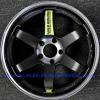How Exactly Does The Center Diff Work On A Gtr?
Announcements
-
Similar Content
-
Latest Posts
-
By Dose Pipe Sutututu · Posted
Plazmaman 76mm Pro Series, done. Data to back it up, I posted up somewhere here a few years back -
So.....wire it up appropriately. You can't use the resister pack with those injectors anyway.
-
By r33.antwone · Posted
that’s the thing i’m on ID1050s and haltech not getting power due to the injector resistor -
By Toilet Goblin · Posted
ahh okay cheers, i was thinking of just going for the m073, think m079 would be way too overkill considering they are same size. -
My first car was a HG. I'm very familiar with them. A mild cam upgrade is a good idea. The 186 is a very flexible engine - meaning it has good torque from down low. You can give up a little torque down low for quite a lot more excitement in the mid range, and a bit more up top - but they are not exactly a rev monster. You need to upgrade valve springs at the minimum. For a bigger cam, you'd want to make sure it wasn't still running the original fibre cam gear. That would be unlikely, given that most of them shat themselves in the 70s and 80s, but still within the realms of possibility. Metal cam gear required. Carbies are a huge issue. The classic upgrade was always a Holley 350, which works, but is usually pretty bad for fuel consumption. The 186S had a 2 barrel Stromberg on it that was very similar to the one on the 253, and is a reasonable thing if you can find one, and find someone to help you get it set up (which is the same issue with setting up a 350 to work nice). The more classic upgrade was twin sidedraught CD type carbs, or triples of same, or triple Webers. The XU-1 triple Webers being the best example. You can still buy all this stuff new, I think, but it's a lot of coin to drop. And then the people able to set them up are getting fewer and further in between. There's still some, but it used to be everyone's** dad and uncle could do it. **Not everyone's! But a lot. All in all, I wouldn't get too carried away with the engine. Anything you do to it without a full rebuild for power and revs will only make it slightly faster. I am all in favour of a complete teardown rebuild, with nice rods and pistons, 10 or 10.5:1 compression, and a clean port job with at least a big enough cam to run 98 with that compression, if not bigger. And if I did that to a dirty old red motor, I'd want to inject it too, which I'd struggle to fight against the devil on my shoulder that would argue for ITBs and trumpets. But the bills would start to mount up, and it will still never make stupid power. OK, a few people still know how to build absolutely mental red motors, courtesy of the work that went into HQ racing and modern knowledge being applied. But even a 300HP red motor is no match for an RB20 with a TD06. So you have to decide what it's worth to you. I'd just put a set of 6>2>1 extractors, a 2.5" exhaust and an electronic ignition conversion/dizzy on it and just run the old girl like the fairly slow old girl that she really is.
-





Recommended Posts
Create an account or sign in to comment
You need to be a member in order to leave a comment
Create an account
Sign up for a new account in our community. It's easy!
Register a new accountSign in
Already have an account? Sign in here.
Sign In Now